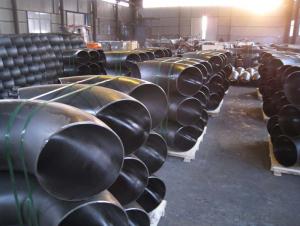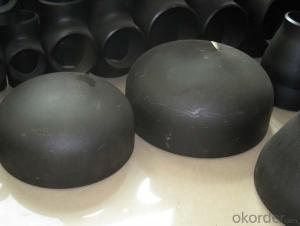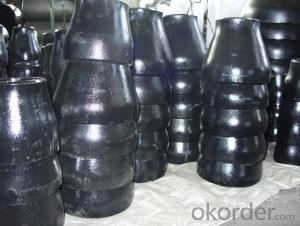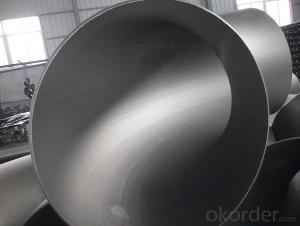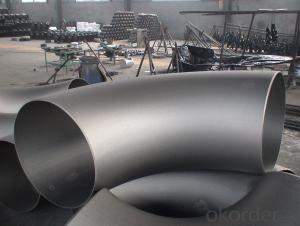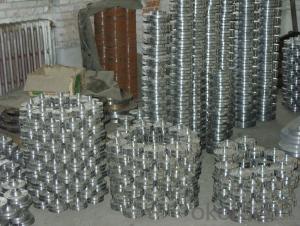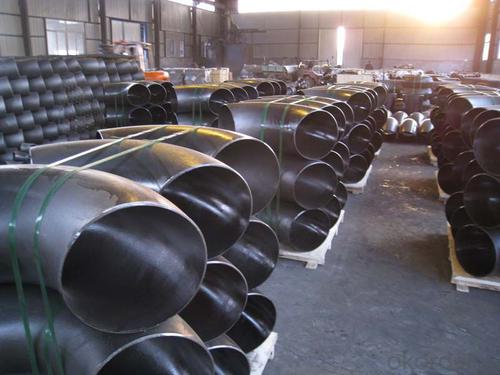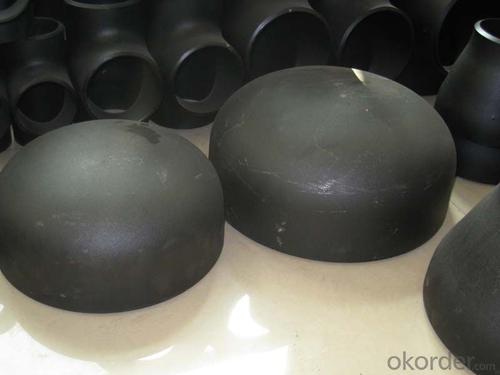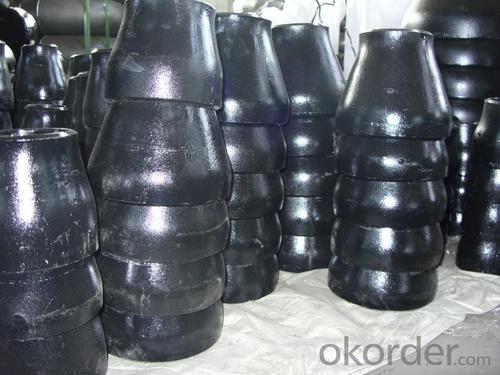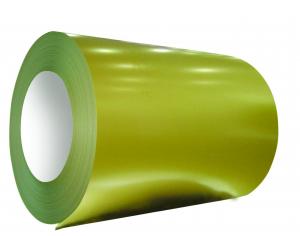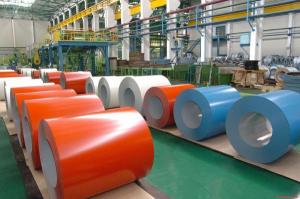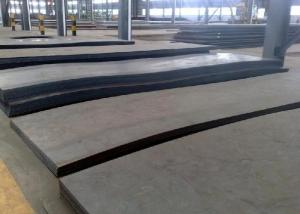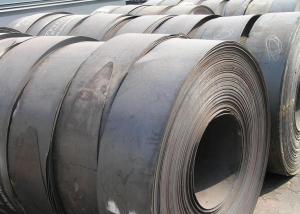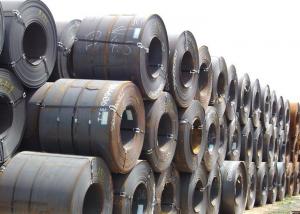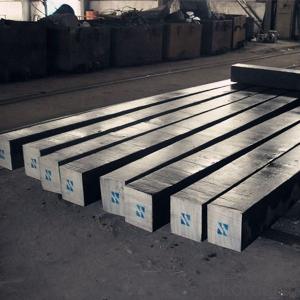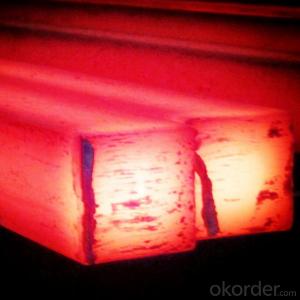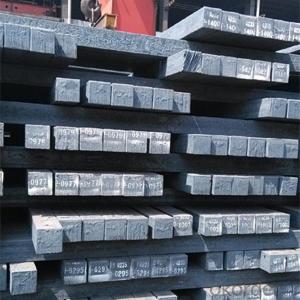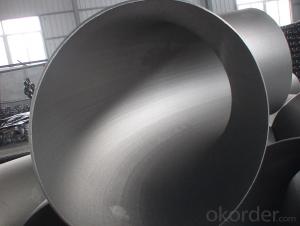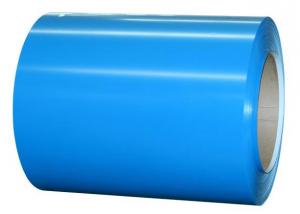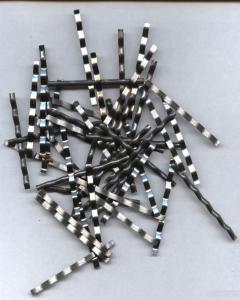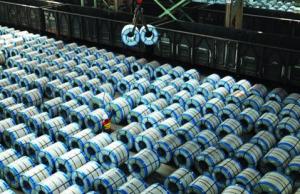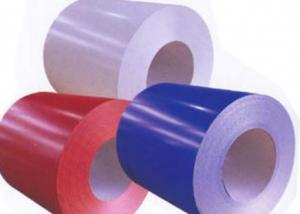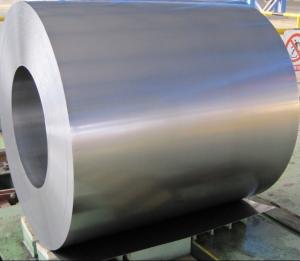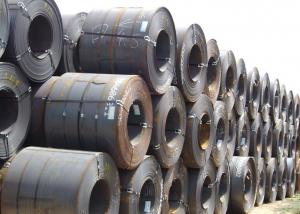Carbon Steel Pipe Fittings LR BEND
- Loading Port:
- China Main Port
- Payment Terms:
- TT OR LC
- Min Order Qty:
- -
- Supply Capability:
- -
OKorder Service Pledge
OKorder Financial Service
You Might Also Like
Specifications
pipe fitting elbow
Certificate:ISO:9001-2000
New material,completely meet asme and din standard
Best price
1. type: AISI ASTM A234 WPB BW Con Elbow
2. Size: 1/2"-48"(1/2"-24"is seamless and 26"-48"is welded)
3. Wall thickness: sch10-160, STD, XS, XXS
4. Material: A234WPB, A420WPL6, A420WP5, WP11, WP12, WP22, etc
5. Welding line: seamless
6. Angle of bend: 30, 45, 90, 180degree
7. Bending radius: SR, LR
8. Standard: ANSI B16.9, JIS, SB, DIN, GB
9. Surface treatment: black paint, vanis paint, black rust-proof oil,
transparent oil, hot galvanizing
10. Application: petroleum, electricity, chemical, natural gas, metallurgy,construction,
shipbuilding and other fields because of its high pressure, high temperature, etc
11. connection: welding
12. technics:forged
13.Certificate:ISO9001 - 2000, CE, SGS, etc.
14. packaging: wooden case, pallet, container or in accordance with the
requirement of customers
15. Principle: quality fist, customer first, credit first
16. payment: L/C T/T
17. delivery time: 7-25 days after payments
18. Notes: the bevel can be made in accordance with the special requirements
of the customers
19. Others: we can also produce the products according to the requirements
of the customers
The main production:
1. PIPE FITTINGS: elbows, tees, bends, reducers, cap, flanges and sockets etc.
2. PIPE: bult welded pipes, seamless pipes, threaded pipes, etc.
We sincerely welcom customers at home and abroad to visit us and seek common development.
- Q: What are the different types of steel alloys?
- There are several different types of steel alloys, including carbon steel, stainless steel, tool steel, alloy steel, and high-strength low-alloy steel.
- Q: What are the common manufacturing processes involved in producing steel products?
- The common manufacturing processes involved in producing steel products include melting and refining of iron ore, which is then transformed into molten steel. This molten steel is then cast into various shapes through processes such as casting, rolling, forging, or extrusion. After shaping, the steel may undergo heat treatment, surface treatment, and finishing processes such as machining, grinding, or coating to achieve the desired properties and appearance.
- Q: How is steel used in the production of agricultural machinery and equipment?
- Steel is used extensively in the production of agricultural machinery and equipment due to its strength, durability, and versatility. It is used to construct the frames, bodies, and components of various agricultural machines such as tractors, harvesters, plows, and irrigation systems. Steel's robust nature allows these machines to withstand harsh environments, heavy loads, and repetitive use, ensuring they can operate efficiently for long periods. Additionally, steel can be easily shaped and welded, making it ideal for creating complex and custom parts required in agricultural equipment.
- Q: How are steel products used in the construction of theme-based resorts and hotels?
- Steel products are widely used in the construction of theme-based resorts and hotels due to their durability, strength, and versatility. They can be used in various structural elements such as beams, columns, and trusses, ensuring the stability and safety of the building. Additionally, steel is often utilized for designing iconic features and architectural elements, such as unique facades, grand entrances, and intricate detailing. Its ability to withstand extreme weather conditions and support heavy loads makes it an ideal choice for constructing large, expansive spaces within resorts and hotels. Overall, steel products play a crucial role in creating visually appealing and structurally sound theme-based resorts and hotels.
- Q: How is steel used in the production of industrial valves?
- Steel is commonly used in the production of industrial valves due to its strength and durability. It is used to create the main body and components of the valve, providing a sturdy and reliable structure. Additionally, steel can withstand high temperatures and pressures, making it suitable for use in various industries such as oil and gas, water treatment, and manufacturing.
- Q: What are the advantages of using steel products over other materials?
- There are several advantages of using steel products over other materials. Firstly, steel is an incredibly strong and durable material, making it suitable for a wide range of applications. It can withstand heavy loads, extreme temperatures, and harsh environmental conditions. Secondly, steel is highly resistant to corrosion, rust, and degradation, ensuring a longer lifespan compared to materials like wood or plastic. Additionally, steel is recyclable, making it an environmentally friendly choice. Finally, steel offers versatility in design and fabrication, allowing for complex shapes, customization, and precision engineering.
- Q: What are the different types of steel wires and their applications in telecommunications?
- There are several types of steel wires commonly used in telecommunications. One of the most widely used types is galvanized steel wire, which is coated with a layer of zinc to protect against corrosion. This type of wire is commonly used for overhead lines, such as telephone and power lines. Another type is high-carbon steel wire, which is known for its strength and durability. This type of wire is commonly used for applications that require high tensile strength, such as antenna cables and suspension wires. Stainless steel wire is another commonly used type, known for its resistance to corrosion and heat. It is often used in applications where exposure to harsh environmental conditions is expected, such as submarine cables and satellite dish supports. Lastly, copper-clad steel wire is a type of wire that combines the conductivity of copper with the strength of steel. It is commonly used for grounding applications in telecommunications systems. Overall, the different types of steel wires have various applications in telecommunications, ranging from overhead lines to antenna cables, grounding systems, and support structures. Each type of wire offers specific characteristics that make it suitable for different telecommunications needs.
- Q: How is steel used in the manufacturing of transportation equipment?
- Steel is used in the manufacturing of transportation equipment due to its strength, durability, and versatility. It is commonly utilized in the construction of car frames, aircraft bodies, ship hulls, and railway tracks. Steel's properties make it suitable for handling heavy loads, providing structural integrity, and ensuring safety in various modes of transportation.
- Q: What are the different types of steel chains and their uses in lifting equipment?
- There are primarily three types of steel chains used in lifting equipment: alloy steel chains, carbon steel chains, and stainless steel chains. Alloy steel chains are incredibly strong and durable, making them suitable for heavy-duty lifting applications. Carbon steel chains are more affordable and offer decent strength, making them commonly used in medium-duty lifting tasks. Lastly, stainless steel chains are corrosion-resistant and often used in industries where exposure to moisture or chemicals is expected. Each type of steel chain has distinct properties that make them suitable for specific lifting needs.
- Q: How is steel used in the fabrication of bridges?
- Steel is commonly used in the fabrication of bridges due to its high strength and durability. It is used to construct the superstructure of the bridge, including the beams, girders, and trusses, providing the necessary support and load-bearing capacity. Steel is also used in the fabrication of bridge decks, ensuring a sturdy surface for vehicles and pedestrians to cross. Additionally, steel allows for efficient and cost-effective construction, as it can be prefabricated off-site and easily assembled on-site, making it a popular choice in bridge fabrication.
Send your message to us
Carbon Steel Pipe Fittings LR BEND
- Loading Port:
- China Main Port
- Payment Terms:
- TT OR LC
- Min Order Qty:
- -
- Supply Capability:
- -
OKorder Service Pledge
OKorder Financial Service
Similar products
Hot products
Hot Searches
Related keywords
